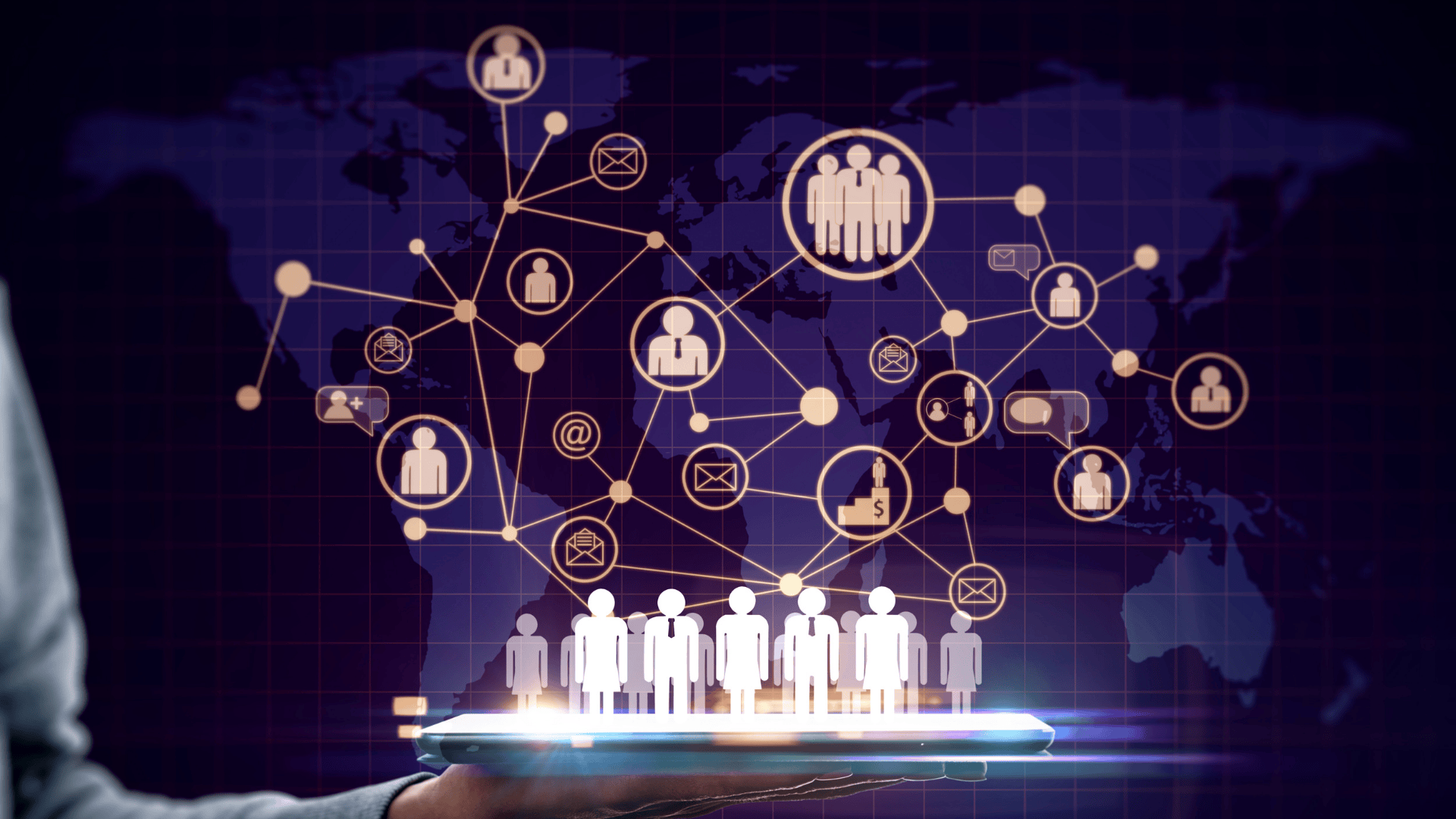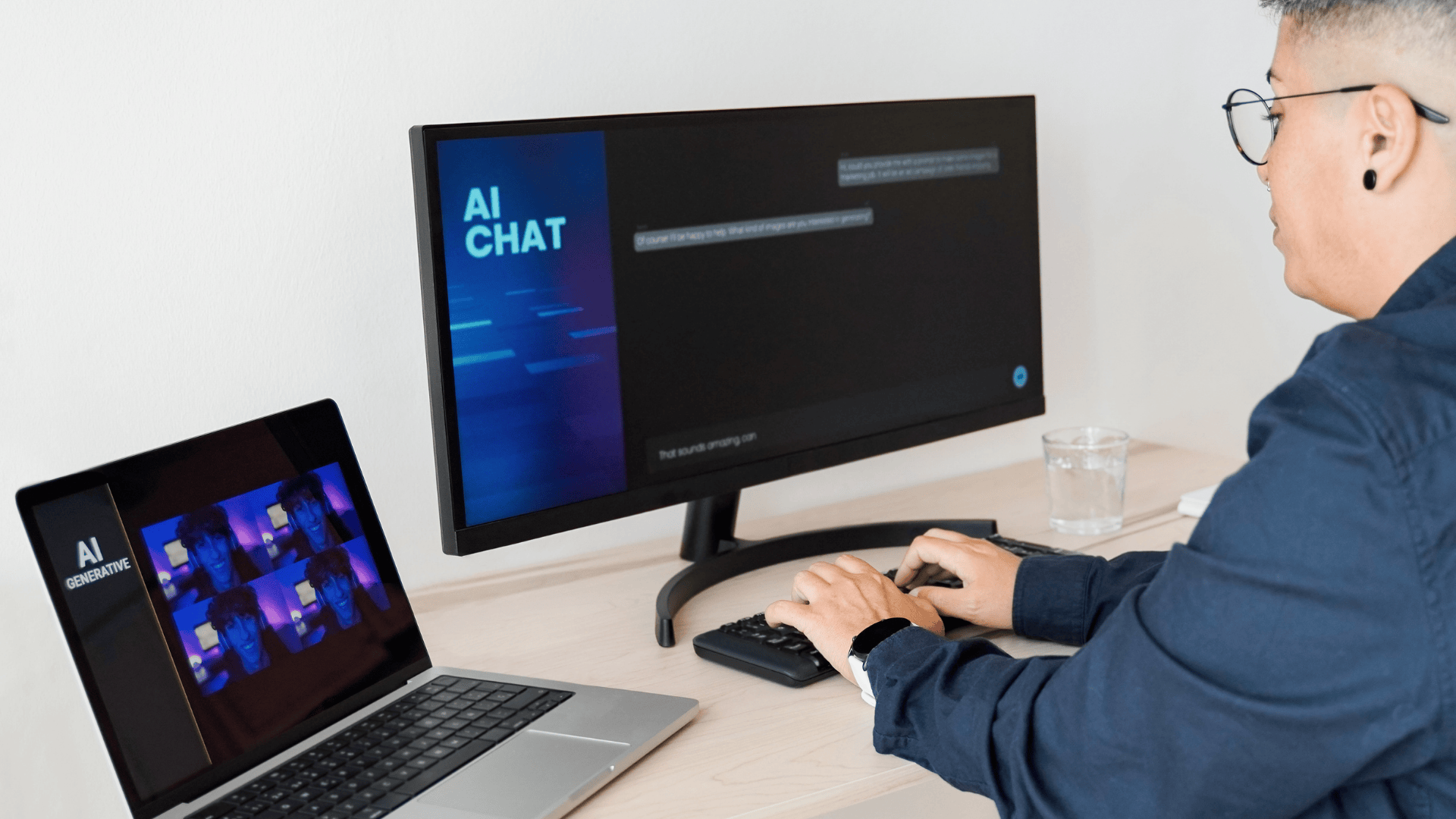Tag: HR technology
-

5 Ways AI in HRMS Saves Time, Money, and Sanity
5 Ways AI in HRMS Saves Time, Money, and SanityThe modern HR department is no stranger to chaos — endless paperwork, manual processes, delayed approvals, and compliance confusion. As companies scale, these inefficiencies multiply. The solution? Artificial Intelligence integrated into Human Resource Management Systems (HRMS). AI-powered HRMS platforms like NINJA HR are transforming how businesses handle hiring, payroll, employee engagement, and compliance. They don’t just automate tasks — they make decisions smarter, faster, and more human. In this article, we’ll explore five ways AI-driven HRMS saves time, money, and sanity for HR professionals and growing organizations alike.The Real Problem with Traditional HRBefore diving into solutions, let’s talk about the old-school approach. Traditional HR management relies heavily on spreadsheets, emails, and disconnected systems. Managers spend hours juggling recruitment data, attendance logs, and compliance forms. These outdated methods lead to human errors, miscommunication, and poor decision-making. Worse, they consume valuable time that could be used for strategy and employee engagement. Simply put, manual HR processes drain productivity and morale. Enter AI — the ultimate efficiency booster for HRMS.1. Automating Routine Tasks to Save TimeRepetitive HR tasks like attendance tracking, leave approvals, payroll updates, and onboarding paperwork can consume more than half of an HR team’s day. AI in HRMS takes these manual processes off your plate. With automation, NINJA HR handles time-off requests, generates payslips, and updates employee records without human intervention. Smart chatbots answer employee questions instantly, while digital workflows route approvals automatically. The result? HR professionals regain countless hours every week to focus on people, not paperwork.2. Smarter Recruitment that Cuts Hiring CostsRecruitment is one of the most expensive HR functions. Traditional hiring often means sorting through hundreds of resumes manually and conducting multiple interview rounds — costing both time and money. AI-driven HRMS tools streamline this entire process. NINJA HR uses machine learning algorithms to screen resumes, score candidates, and match them to job requirements. It also predicts cultural fit based on behavioral data, ensuring better long-term hires. By automating sourcing and screening, businesses reduce recruitment costs by up to 50% while cutting time-to-hire dramatically.3. Reducing Payroll and Compliance ErrorsPayroll mistakes are costly — both financially and legally. Manual data entry errors or missed tax updates can lead to fines and frustrated employees. AI in HRMS ensures every payroll cycle is accurate, compliant, and automated. NINJA HR’s AI engine tracks labor laws, updates statutory requirements, and validates calculations in real time. It detects anomalies, flags discrepancies, and ensures every paycheck aligns with policies. This not only saves money but also safeguards the company’s reputation. HR leaders can finally relax knowing compliance runs on autopilot.4. Predictive Analytics for Smarter Decision-MakingAI isn’t just about automation — it’s about intelligence. Predictive analytics in HRMS like NINJA HR help organizations make proactive decisions. The system analyzes attendance trends, engagement data, and turnover rates to identify early warning signs. It can forecast hiring needs, detect burnout risks, and even suggest training opportunities for skill gaps. Instead of reacting to problems, HR leaders act with foresight. This intelligence-driven approach not only improves retention but also ensures the company scales sustainably and strategically.5. Enhancing Employee Experience and EngagementA satisfied workforce is the backbone of a thriving business. Yet, employees often feel disconnected due to poor communication and outdated systems. AI-driven HRMS changes that. NINJA HR uses sentiment analysis and pulse surveys to understand employee morale in real-time. Personalized dashboards show career progress, performance goals, and training suggestions. Chatbots handle HR queries 24/7, reducing frustration. This blend of automation and personalization creates a smooth, empowering experience for employees — improving engagement, loyalty, and overall happiness.Bonus: Saving Sanity with SimplicityTime and money are tangible benefits, but the sanity HR professionals regain is priceless. Instead of drowning in paperwork or chasing approvals, they finally have breathing room to focus on meaningful work — culture-building, innovation, and strategy. NINJA HR’s AI-powered dashboards simplify complex data into clear visuals. No more juggling spreadsheets or worrying about missed deadlines. It’s HR Zen — powered by artificial intelligence.The Financial Impact of AI in HRMSLet’s put it into perspective. Businesses using AI-driven HR systems report up to a 40% reduction in administrative costs and a 25% improvement in productivity. Every automated workflow saves hours, every error prevented saves money, and every engaged employee adds long-term value. For growing companies, this translates into faster scalability and stronger profit margins. NINJA HR doesn’t just streamline processes — it drives measurable financial impact by aligning technology with strategic growth.Real-World Example: How One Company Transformed with AI HRMSConsider a mid-sized IT firm that switched from spreadsheets to NINJA HR. Before automation, their HR team spent 60% of their time managing attendance and payroll queries. Within months of adopting AI automation, administrative tasks dropped by half. Recruitment turnaround time improved from three weeks to five days, and employee satisfaction scores rose by 30%. This transformation wasn’t just operational — it was cultural. By removing bottlenecks, HR could focus on talent development and innovation instead of daily chaos.Why NINJA HR Leads the PackNot all HRMS platforms are created equal. NINJA HR’s advantage lies in its balance of automation, intelligence, and usability. It integrates seamlessly with existing tools, supports multi-level workflows, and scales effortlessly as your business grows. With its intuitive interface and AI engine, it’s built to evolve alongside your organization. From startups to enterprises, NINJA HR adapts to every business size and need — ensuring your HR strategy stays one step ahead.The Future of HRMS Is AI-PoweredAI in HRMS isn’t a luxury anymore — it’s a necessity for companies that want to stay competitive. As organizations embrace hybrid work models and global teams, manual HR systems simply can’t keep up. The future belongs to intelligent platforms that automate, analyze, and adapt. With NINJA HR, HR departments move from being reactive administrators to proactive strategists — leading with insights, not paperwork.ConclusionThe HR world is changing fast. What used to take days can now be done in minutes — thanks to AI-driven HRMS like NINJA HR. By automating routine work, enhancing decision-making, ensuring compliance, and improving employee engagement, AI gives HR leaders back what they need most: time, focus, and peace of mind. In short, it saves time, money, and sanity. The companies that adopt AI now won’t just keep up with change — they’ll lead it. And HR professionals using NINJA HR will finally have the freedom to focus on what truly matters — people. -

Why AI-Driven HR Systems Are a Game-Changer for Growing Teams
Why AI-Driven HR Systems Are a Game-Changer for Growing TeamsGrowth is exciting, but for HR teams, it also means growing pains—more employees, more data, more compliance, and more complexity. Managing it all manually or even with basic HR software becomes unsustainable. That’s where artificial intelligence steps in. AI-driven HR systems like NINJA HR are transforming the way modern companies hire, manage, and retain their people. Instead of drowning in administrative work, HR leaders can now make data-driven decisions in seconds, personalize employee experiences, and scale operations efficiently. This article explores why AI-powered HR tools are not just the future—they’re the foundation of smarter, faster-growing teams today.The Challenge of Scaling HR Without AIWhen businesses expand, their HR departments face exponential challenges. More employees mean more recruitment cycles, more onboarding, more data to manage, and an increased need for engagement and compliance tracking. Traditional HR systems, built for basic data storage, simply can’t keep up. Manual decision-making slows down hiring, paper-based processes lead to errors, and limited visibility makes workforce planning reactive instead of proactive. Without automation and analytics, HR becomes a bottleneck instead of a growth enabler.Enter AI-Driven HR SystemsAI-driven HR platforms use machine learning, natural language processing, and predictive analytics to perform repetitive tasks and provide deep insights into your workforce. Instead of just storing employee data, they analyze it—spotting trends, predicting attrition, and recommending actions. NINJA HR takes this a step further by combining automation with intelligence, helping HR teams work faster, smarter, and more strategically.1. Smarter Recruitment with AIRecruiting at scale can be chaotic—hundreds of resumes, dozens of interviews, and endless follow-ups. AI simplifies this entire process. NINJA HR’s AI-driven recruitment tools scan resumes, rank candidates based on skill fit, and even predict performance potential. The system identifies the most relevant applicants instantly, cutting screening time by up to 70%. It can also automate communication, sending personalized updates to candidates and freeing HR from repetitive outreach. The result? Faster hiring cycles and better-quality hires.2. Predictive Insights for Employee RetentionEmployee turnover is costly, but AI helps HR see it coming. NINJA HR uses predictive analytics to analyze behavioral and performance data, identifying early signs of disengagement or burnout. It alerts managers when an employee’s risk of leaving rises, giving HR time to act proactively. Instead of reacting to resignations, companies can now address issues before they escalate—improving retention and morale.3. Personalized Learning and DevelopmentAI takes employee training beyond generic learning portals. With NINJA HR, AI analyzes each employee’s role, performance, and goals to recommend personalized development paths. Whether it’s suggesting leadership training for high performers or skill courses for junior staff, the platform ensures learning investments are targeted and measurable. This personalization boosts engagement and accelerates skill growth across the organization.4. Automating Repetitive HR TasksFrom updating records to approving leave requests, repetitive HR work consumes hours daily. NINJA HR automates these tasks using smart workflows and AI-based triggers. The system handles attendance tracking, payroll synchronization, and compliance reporting automatically. HR teams can configure approval chains once—and let AI manage them continuously. This frees HR from admin overload, allowing them to focus on people strategy and company culture.5. Enhanced Decision-Making Through DataAI transforms HR from intuition-driven to evidence-driven. Instead of relying on gut feeling, HR leaders can now use real-time data to make informed decisions. NINJA HR’s dashboards provide insights into hiring performance, employee satisfaction, and workforce productivity. The AI engine translates complex data into clear visuals and actionable recommendations, helping HR and leadership teams align decisions with business goals.6. AI-Powered Employee EngagementHappy employees stay longer, but keeping engagement high in growing teams can be tricky. NINJA HR uses sentiment analysis and feedback analytics to gauge morale across departments. It collects employee feedback, analyzes tone, and identifies areas that need attention. HR can then take targeted action to improve engagement before it drops. Automated pulse surveys, recognition alerts, and communication suggestions help keep your culture thriving even as your workforce scales.7. Smarter Compliance and Risk ManagementCompliance is one of the most complex HR responsibilities. Missing a regulation update or filing deadline can result in hefty penalties. AI-driven HRMS like NINJA HR continuously monitor compliance requirements and automatically update policies or alert HR to changes. The system ensures every document, record, and audit trail is maintained accurately—minimizing human error and reducing legal risks. With AI, compliance management becomes proactive instead of reactive.8. Workforce Planning with Predictive AnalyticsAs teams grow, predicting future workforce needs becomes essential. NINJA HR’s AI-driven analytics can forecast hiring requirements, skill gaps, and resource shortages based on historical data and business growth patterns. This foresight helps HR plan ahead, align recruitment with business goals, and avoid overstaffing or talent shortages. It’s not just automation—it’s strategic foresight powered by AI.9. Improving Employee Experience with ChatbotsAI-powered chatbots are becoming the new HR assistants. NINJA HR includes virtual chat support that answers employee queries instantly—about policies, leave balances, or payslips—24/7. This not only improves employee experience but also relieves HR teams from answering repetitive questions. As a result, response times drop, satisfaction increases, and HR becomes more accessible to employees across all locations.10. The Cost Advantage of AI-Driven HRImplementing AI in HR isn’t just about innovation—it’s about efficiency and cost reduction. Automating recruitment, payroll, and compliance processes saves hundreds of work hours each month. Predictive insights reduce turnover costs, while data-driven decisions prevent over-hiring or underutilization. NINJA HR delivers measurable ROI by combining automation and intelligence in one unified system, making it a cost-effective investment for growing businesses.Overcoming the Fear of AI in HRSome HR professionals worry that AI will replace their roles, but in reality, it enhances them. AI takes over repetitive, low-value work—allowing HR professionals to focus on strategy, leadership, and culture. Instead of replacing HR, AI amplifies its impact. NINJA HR is built to augment human decision-making, not eliminate it. The system provides recommendations, not commands—keeping HR firmly in control.The Role of Human Insight in an AI-Driven WorldWhile AI provides data and automation, empathy and intuition remain uniquely human. HR professionals still drive relationships, communication, and culture-building—things AI can’t replicate. The best HR systems, like NINJA HR, combine the efficiency of AI with the empathy of human leadership. This blend creates an HR function that’s not just faster but also more compassionate and effective.Integrating AI Seamlessly: Why NINJA HR ExcelsTransitioning to AI shouldn’t mean complex setups or long learning curves. NINJA HR integrates seamlessly into existing workflows, syncing with your current systems and automating processes gradually. Its intuitive design ensures that even non-technical HR staff can use it comfortably. With built-in training tools, support, and modular scalability, it’s a smooth upgrade—not a disruption.ConclusionFor growing teams, the old ways of managing HR just don’t work anymore. AI-driven HR systems like NINJA HR offer the intelligence, automation, and scalability modern organizations need to thrive. They eliminate repetitive tasks, predict workforce trends, and create personalized employee experiences—all while saving time and costs. More importantly, they empower HR to move beyond administration and become strategic drivers of growth. In a world where speed, data, and people all matter, AI in HR isn’t optional—it’s essential. And NINJA HR is the partner that makes this transformation effortless. -

10 Tech-Driven Ways to Improve Team Morale
10 Tech-Driven Ways to Improve Team Morale
In today’s fast-paced digital workplace, employee morale isn’t just a nice-to-have — it’s essential to productivity, retention, and innovation. Leveraging technology can significantly boost team morale by streamlining communication, recognizing achievements, promoting work-life balance, and making daily tasks more enjoyable. Here are 10 impactful ways technology can transform your team’s morale.
1. Virtual Recognition PlatformsEmployee recognition is crucial. Platforms like Bonusly or Kudos allow peers and managers to celebrate individual contributions instantly. These tools not only promote positive reinforcement but also create a culture of appreciation, which studies show is directly tied to employee satisfaction.
2. Collaborative Communication ToolsApps like Slack, Microsoft Teams, and Zoom ensure teams stay connected regardless of physical location. These platforms reduce communication barriers, foster open dialogue, and allow for real-time brainstorming, strengthening a sense of community and inclusion.
3. Employee Feedback SoftwareTools like Officevibe, 15Five, or Culture Amp allow employees to voice concerns, share ideas, and provide feedback anonymously. Frequent check-ins via these platforms lead to better alignment, transparency, and a feeling of being heard.
4. Wellness & Mindfulness AppsProviding access to apps like Headspace or Calm shows employees their mental health is valued. Integrating wellness into the company culture through digital resources reduces burnout and builds emotional resilience.
5. Gamified Task ManagementProject tools like Asana or Trello can be gamified to make work more engaging. Adding elements like leaderboards, badges, or achievement rewards motivates team members, making progress feel more satisfying and fun.
6. Remote Team-Building GamesUse platforms like Donut, Kahoot, or QuizBreaker to host virtual games, trivia, or coffee chats. These break the monotony of work and help employees form bonds beyond tasks and deadlines, improving team cohesion.
7. Smart Scheduling ToolsAI-powered scheduling tools like Clockwise help reduce meeting fatigue by finding the most optimal times for collaboration. They protect focus time and ensure no one feels overwhelmed by unproductive meetings.
8. Learning Management Systems (LMS)Platforms such as Coursera for Business, LinkedIn Learning, or Udemy empower employees to upskill and pursue career growth. Investing in learning fosters morale by showing trust in long-term employee development.
9. Digital Suggestion BoxesA modern twist on traditional feedback forms, digital suggestion boxes promote innovation. Tools like Suggestion Ox allow employees to submit ideas in real time, giving them a voice in the company’s evolution.
10. Celebratory Bots and AutomationsBots like BirthdayBot or Work Anniversary reminders can automatically celebrate employee milestones. These thoughtful gestures help build a supportive, human-centric work environment, even in distributed teams.
Final ThoughtsTechnology, when used thoughtfully, becomes more than just a productivity tool — it’s a morale multiplier. By integrating the right digital solutions into your daily workflow, you can create a workplace that values recognition, connection, and personal growth — the very things that fuel lasting motivation. -

Tech-Driven HR: Solving Real Problems with Real Innovation
Tech-Driven HR: Solving Real Problems with Real InnovationThe HR landscape has been experiencing significant shifts in recent years, driven by the increasing role of technology in every business function. While human resources have traditionally been seen as a series of administrative tasks, technology has opened the door to innovative solutions that not only streamline operations but also enhance the employee experience, improve decision-making, and ultimately, transform HR into a strategic asset.But the transformation doesn’t happen overnight, and for many businesses, adopting the right technologies can feel overwhelming. The good news is, there are now countless HR tech tools available that cater to a wide variety of needs. Whether it’s for recruitment, employee engagement, performance management, or compliance, there is a tech solution to address each challenge. In this blog, we’ll explore how tech-driven HR is solving real-world problems and how businesses can leverage these innovations to create a more efficient and human-centered workplace.Understanding the Need for HR InnovationHR has traditionally been bogged down by manual processes and a lack of integration across systems. Tasks like payroll processing, employee record management, and recruitment could take up significant portions of an HR professional’s time. As businesses scale, these processes become more complex and harder to manage, leading to inefficiency and human error. This is where technology comes in.In today’s fast-paced world, employees and employers alike expect more from HR. Employees want seamless, personalized experiences, and businesses want data-driven insights to make better decisions. The pressure on HR departments to deliver on these expectations has never been higher, and that’s where HR technology is stepping in.The Power of HR TechnologyThe rise of HR technology has brought about a paradigm shift in how businesses manage their human capital. From recruitment to retirement, technology is enabling HR departments to automate tasks, increase efficiency, and focus on strategic initiatives that add value to the business.Some of the key areas where technology is transforming HR include:
– Recruitment and Talent Acquisition
– Employee Engagement and Communication
– Performance Management
– Learning and Development
– Payroll and Benefits Administration
– Compliance and Risk ManagementLet’s take a deeper dive into some of these areas.Tech Solutions for Recruitment and Talent AcquisitionRecruitment is often one of the most time-consuming processes for HR teams. Sorting through thousands of resumes and conducting endless rounds of interviews can take a significant toll on HR professionals. Fortunately, AI-driven recruitment software is revolutionizing the process.– AI-Powered Screening: Automated systems can screen resumes, rank candidates, and match qualifications to job descriptions in a fraction of the time it would take a human recruiter. This ensures that only the best-suited candidates make it through the initial stages of the hiring process.– Applicant Tracking Systems (ATS): ATS platforms allow HR teams to streamline the recruitment process, track applicants, and schedule interviews more efficiently. These systems often integrate with other HR tools, such as job boards and social media channels, to cast a wider net in attracting candidates.– Video Interviewing Platforms: Video interviewing tools enable recruiters to interview candidates remotely, saving time and expanding the talent pool. Many platforms also include AI features that assess candidate responses, making the interview process more efficient.Enhancing Employee Engagement and CommunicationIn today’s remote and hybrid work environments, fostering employee engagement and communication has become more challenging. Fortunately, technology is offering new ways to keep employees connected, motivated, and informed.– Employee Engagement Platforms: These platforms measure employee satisfaction, provide real-time feedback, and help organizations address issues before they escalate. Engagement tools often include surveys, pulse checks, and recognition features to boost morale and identify areas for improvement.– Communication Tools: Chat platforms like Slack or Microsoft Teams have become the cornerstone of communication for many organizations. These tools offer instant messaging, file sharing, and video conferencing, allowing employees to collaborate seamlessly, regardless of location.– Recognition and Rewards Systems: Technology allows businesses to implement recognition programs that celebrate achievements and milestones, enhancing employee motivation and morale. These platforms enable peer-to-peer recognition, which fosters a positive and inclusive workplace culture.Performance Management ReimaginedTraditional performance reviews, which often rely on annual evaluations, are no longer sufficient in the fast-paced work environment of today. Technology has paved the way for more continuous, data-driven approaches to performance management.– Continuous Feedback: Rather than waiting for yearly reviews, platforms like Lattice or 15Five facilitate continuous feedback between managers and employees. This regular exchange helps employees stay aligned with their goals and gives them the tools they need to grow in real-time.– Goal Setting and Tracking: OKR (Objectives and Key Results) software such as Weekdone or Gtmhub allows businesses to set clear, measurable goals for employees and track their progress over time. These platforms ensure that everyone is working toward common objectives and that performance is always aligned with organizational priorities.– Employee Development: Many performance management systems now incorporate development plans that are tailored to individual employees. By focusing on personal growth and skill enhancement, these platforms support a culture of learning and continuous improvement.Learning and Development: Building a Future-Ready WorkforceWith the rapid pace of technological advancement, businesses need to ensure that their employees are constantly learning and evolving. Learning management systems (LMS) have become critical for organizations looking to upskill their workforce and build a future-ready team.– Learning Platforms: Platforms like LinkedIn Learning and Coursera offer employees access to a wide range of online courses that help them build new skills or improve existing ones. These tools allow employees to take charge of their own learning and development, making it easier to stay competitive in an ever-changing job market.– Personalized Learning Paths: Many companies are now using AI to offer personalized learning paths based on an employee’s role, career goals, and skill gaps. This ensures that employees are always equipped with the right tools and knowledge to succeed in their current role and grow within the company.Payroll and Benefits Administration Made EasyOne of the most important—and most complex—tasks HR teams face is managing payroll and benefits. With the help of technology, payroll processing can be automated, and benefits enrollment can be streamlined, reducing the potential for errors and improving employee satisfaction.– Payroll Automation: Cloud-based payroll systems like Gusto or ADP streamline the payroll process, ensuring that employees are paid on time, every time. These systems can handle tax calculations, deductions, and reporting, reducing the administrative burden on HR teams.– Benefits Management: HR tech tools help simplify benefits enrollment, ensuring that employees have easy access to their health benefits, retirement plans, and other perks. These platforms often include self-service portals where employees can view and update their benefits, reducing HR’s workload.Compliance and Risk ManagementCompliance is one of the most critical aspects of HR, but it is also one of the most complex. Managing legal requirements, workplace regulations, and employee documentation can be overwhelming. Fortunately, HR technology is simplifying compliance and risk management.– Compliance Software: HR compliance tools help businesses stay on top of changing laws and regulations, ensuring they remain in compliance with local, state, and federal requirements. These platforms often include built-in compliance checklists, automated reminders, and reporting features that make it easier to track key dates and filings.– Document Management Systems: Technology enables HR to securely store and manage employee records, contracts, and other important documents. Cloud-based systems ensure that these records are easily accessible and protected from unauthorized access.Conclusion: The Future of Tech-Driven HRThe role of technology in HR is only going to continue to grow. As businesses continue to face new challenges in an increasingly digital world, tech-driven HR solutions will be crucial for creating more efficient, innovative, and engaging workplaces.By embracing HR technology, companies can streamline processes, improve the employee experience, and make better, data-driven decisions. The businesses that invest in the right tools today will be better positioned to thrive in the future.The future of HR is tech-driven, and those who adopt these innovations will lead the way. Stay ahead of the curve, and don’t settle for outdated HR practices when you can drive real change with technology. -

The Hidden Gems of HR Technology You’re Missing
The Hidden Gems of HR Technology You’re Missing
In the rapidly evolving world of Human Resources (HR), technology plays a pivotal role in streamlining processes and enhancing employee experiences. While many organizations are familiar with mainstream HR tech solutions, there’s a wealth of hidden gems that can significantly elevate HR operations. This article uncovers these lesser-known but highly effective HR technologies that you might be missing.
Beyond the Basics: Exploring Niche HR Tech
While traditional HRIS and ATS systems are essential, niche HR tech solutions address specific challenges and provide unique benefits.
- Specialized Solutions: Tools designed for specific HR functions or industries.
- Innovative Approaches: Technologies that leverage emerging trends like AI, blockchain, and gamification.
- Enhanced Efficiency: Streamlining processes and automating tasks beyond standard HR workflows.
1. AI-Powered Employee Listening Tools
Beyond traditional surveys, AI-powered employee listening tools offer real-time insights into employee sentiment and engagement.
- Sentiment Analysis: Analyzing employee feedback from various sources to gauge morale and identify issues.
- Real-Time Feedback: Providing continuous feedback loops for immediate action.
- Predictive Insights: Identifying potential attrition risks and engagement challenges.
2. Gamified Learning and Development Platforms
Gamification can transform learning and development into engaging and effective experiences.
- Interactive Learning Modules: Using game mechanics to enhance knowledge retention.
- Skill-Based Challenges: Providing opportunities for employees to develop and showcase their skills.
- Performance Tracking: Monitoring employee progress and providing personalized feedback.
3. Blockchain-Based Credential Verification
Blockchain can streamline credential verification and ensure the authenticity of employee qualifications.
- Secure Digital Resumes: Verifying candidate credentials and experience.
- Portable Skill Portfolios: Creating verifiable records of employee skills and certifications.
- Reduced Background Check Time: Streamlining the verification process for faster hiring.
4. AI-Powered Diversity and Inclusion Tools
AI can help organizations identify and address diversity and inclusion gaps.
- Bias Detection: Identifying and mitigating unconscious bias in hiring and performance reviews.
- Inclusive Language Analysis: Ensuring job descriptions and communication are inclusive.
- Diversity Analytics: Tracking and analyzing diversity metrics to measure progress.
5. Personalized Employee Wellness Platforms
Beyond generic wellness programs, personalized platforms cater to individual employee needs.
- Customized Wellness Plans: Tailoring wellness programs to employee preferences and health goals.
- Mental Health Support: Providing access to mental health resources and counseling.
- Data-Driven Insights: Tracking employee wellness metrics and providing personalized recommendations.
Implementing Hidden HR Tech Gems
To effectively leverage these hidden gems, organizations should:
- Identify Specific Needs: Assess current HR challenges and identify areas for improvement.
- Research and Evaluate: Explore niche HR tech solutions and evaluate their suitability.
- Pilot and Scale: Start with pilot programs and gradually scale successful implementations.
- Ensure Integration: Integrate new tools with existing HR systems for seamless workflows.
Conclusion: By exploring and implementing these hidden gems of HR technology, organizations can significantly enhance their HR operations, improve employee experiences, and gain a competitive advantage in the talent market.
-

Revolutionize Your Recruitment Process with These AI Tools
Revolutionize Your Recruitment Process with These AI Tools
In today’s competitive talent market, traditional recruitment methods are often inefficient and time-consuming. Artificial intelligence (AI) is transforming the recruitment landscape by automating tasks, enhancing candidate sourcing, and improving the overall hiring process. This article explores how AI tools can revolutionize your recruitment process, leading to more efficient and effective talent acquisition.
The Impact of AI on Recruitment
AI is streamlining and enhancing various aspects of recruitment, from candidate sourcing and screening to interview scheduling and onboarding. By leveraging AI, HR professionals can focus on strategic initiatives and build stronger candidate relationships.
- Automation: Automating repetitive tasks, such as resume screening and interview scheduling.
- Enhanced Sourcing: Identifying and engaging with top talent across various platforms.
- Improved Candidate Experience: Providing personalized and efficient communication.
1. AI-Powered Candidate Sourcing
AI tools can analyze vast amounts of data from various sources to identify and engage with qualified candidates, expanding your talent pool and improving sourcing efficiency.
- AI-Driven Job Boards: Platforms like Eightfold AI and HireVue use AI to match candidates with relevant job openings.
- Social Media Sourcing: Tools like Hiretual and SeekOut leverage AI to identify candidates on social media platforms.
- Boolean Search Automation: AI automates complex Boolean searches to find highly specific candidate profiles.
2. AI-Based Resume Screening and Parsing
AI can analyze resumes and extract relevant information, automating the screening process and saving time for HR professionals.
- Automated Resume Parsing: Tools like Textio and HireAbility parse resumes and extract key skills and experience.
- Skills Matching: AI algorithms match candidate skills with job requirements.
- Bias Reduction: AI can help reduce unconscious bias in resume screening.
3. AI-Enhanced Candidate Assessment
AI-powered assessment tools can evaluate candidate skills, personality traits, and cultural fit, providing objective insights and improving hiring decisions.
- Skills Assessment: Platforms like Pymetrics and HackerRank assess candidate skills through gamified challenges.
- Personality and Cultural Fit: AI analyzes candidate responses to questionnaires and interviews to assess personality and cultural fit.
- Video Interview Analysis: AI analyzes video interviews to assess candidate communication skills and body language.
4. AI-Driven Interview Scheduling and Communication
AI tools can automate interview scheduling and streamline communication with candidates, improving efficiency and candidate experience.
- Automated Scheduling: Tools like X.ai and Calendly automate interview scheduling based on candidate and interviewer availability.
- Chatbots for Candidate Communication: AI-powered chatbots answer candidate questions and provide updates on the hiring process.
- Personalized Communication: AI tailors communication to individual candidates, enhancing engagement.
5. AI for Onboarding and Employee Retention
AI can enhance the onboarding process and improve employee retention by providing personalized support and identifying potential issues.
- Personalized Onboarding: AI creates customized onboarding plans based on employee roles and needs.
- Employee Sentiment Analysis: AI analyzes employee feedback and communication to identify potential issues and improve retention.
- Predictive Analytics for Retention: AI identifies employees at risk of leaving and suggests retention strategies.
Conclusion: AI tools are revolutionizing the recruitment process, enabling HR professionals to streamline operations, enhance candidate sourcing, and improve hiring decisions. By embracing these technologies, organizations can attract top talent, enhance the candidate experience, and build a competitive advantage in the talent market.
-

How Blockchain Could Transform HR Processes
How Blockchain Could Transform HR Processes
Blockchain technology, renowned for its secure and transparent nature, holds immense potential beyond its applications in cryptocurrencies. It’s poised to revolutionize various industries, including Human Resources (HR). By leveraging blockchain’s unique features, HR processes can become more efficient, secure, and trustworthy. This article explores how blockchain can transform HR practices, offering a glimpse into the future of talent management.
Understanding Blockchain’s Potential in HR
Blockchain’s decentralized and immutable ledger system offers several advantages for HR, including enhanced data security, transparency, and efficiency. These features can address many of the challenges faced by traditional HR processes.
- Decentralization: Distributing data across multiple nodes, enhancing security and reducing single points of failure.
- Immutability: Ensuring data cannot be altered or tampered with, fostering trust and transparency.
- Smart Contracts: Automating processes and enforcing agreements without intermediaries.
1. Streamlining Recruitment and Verification
Blockchain can simplify the recruitment process by providing a secure and verifiable platform for candidate credentials. This eliminates the need for time-consuming background checks and verification processes.
- Digital Resumes: Securely storing and verifying candidate qualifications and experience.
- Credential Verification: Instantly verifying educational and professional certifications.
- Background Checks: Streamlining background checks by accessing verified data.
2. Enhancing Employee Data Management
Blockchain can create a secure and transparent system for managing employee data, ensuring privacy and compliance with data protection regulations.
- Secure Data Storage: Protecting sensitive employee information from unauthorized access.
- Data Ownership: Empowering employees to control their personal data.
- Compliance: Ensuring adherence to GDPR and other data privacy regulations.
3. Automating Payroll and Benefits
Smart contracts on the blockchain can automate payroll and benefits administration, reducing errors and increasing efficiency.
- Automated Payments: Ensuring timely and accurate payroll disbursements.
- Benefits Administration: Streamlining the management of employee benefits.
- Expense Management: Automating expense tracking and reimbursement.
4. Improving Performance Management
Blockchain can create a transparent and tamper-proof system for tracking employee performance, providing objective and verifiable data.
- Skill Tracking: Recording and verifying employee skills and competencies.
- Performance Reviews: Storing and verifying performance feedback and evaluations.
- Reward Systems: Implementing transparent and equitable reward systems.
5. Enhancing Learning and Development
Blockchain can create a decentralized platform for tracking employee learning and development, ensuring verifiable and portable credentials.
- Digital Badges: Issuing and verifying digital credentials for completed courses and certifications.
- Learning Paths: Tracking employee progress and recommending personalized learning paths.
- Skill Portfolios: Creating portable and verifiable skill portfolios for employees.
The Future of Blockchain in HR
As blockchain technology matures, its applications in HR will continue to expand. Organizations that embrace this technology will gain a competitive advantage by streamlining processes, enhancing security, and fostering trust.
- Decentralized HR Platforms: Creating collaborative and transparent HR ecosystems.
- AI and Blockchain Integration: Combining AI and blockchain to automate and optimize HR processes.
- Global Talent Management: Facilitating seamless and secure global talent acquisition and management.
Conclusion: Blockchain technology has the potential to revolutionize HR processes, offering enhanced security, transparency, and efficiency. By embracing this technology, HR teams can streamline operations, improve employee experiences, and drive organizational success in the digital age.
-

The Future of HR: 5 Bold Predictions for 2025
The Future of HR: 5 Bold Predictions for 2025
How AI, Employee Demands, and Global Trends Will Reshape Human Resources
Introduction: The HR Revolution Has Begun
The role of HR is evolving faster than ever. By 2025, the convergence of AI, shifting workforce expectations, and global economic pressures will force HR teams to rethink everything from talent acquisition to workplace culture. Here are five bold predictions that will define the future of HR—and how your organization can prepare.
Prediction 1: AI Becomes HR’s Strategic Co-Pilot
The Rise of Hyper-Personalized Employee Experiences
By 2025, AI will transition from automating administrative tasks to driving strategic decision-making. Tools like predictive attrition models and AI-powered career pathing will dominate HR strategies.
- Example: AI will analyze employee sentiment in real-time (via Slack, email, or surveys) to predict burnout risks and recommend interventions.
- Impact: HR teams will shift from reactive problem-solving to proactive workforce optimization.
Key Tools to Watch:
- Generative AI for drafting policies, job descriptions, and personalized learning plans.
- Emotion-sensing AI in virtual interviews to assess cultural fit.
Prediction 2: The Gig Economy Swallows Traditional Employment
HR’s New Challenge: Managing a Hybrid Workforce
By 2025, over 40% of the global workforce will be freelancers, contractors, or gig workers. HR will need systems to manage compliance, benefits, and engagement for this fluid talent pool.
- Example: Platforms like Upwork and Fiverr will integrate directly with corporate HR systems for seamless contractor onboarding.
- Impact: Benefits like portable health insurance and universal skill certifications will become standard.
Action Steps for HR:
- Invest in platforms that unify payroll and compliance for full-time and gig workers.
- Develop gig-friendly policies to retain top contingent talent.
Prediction 3: Mental Health Becomes a Non-Negotiable KPI
From Perk to Priority: Well-Being as a Business Metric
By 2025, employee mental health will be tracked as rigorously as productivity. Burnout and psychological safety metrics will directly impact executive bonuses and ESG reporting.
- Example: Wearables like Fitbit and Oura Ring will feed anonymized stress data to HR dashboards.
- Impact: Companies with poor well-being scores will struggle to attract talent.
Tools to Adopt Now:
- AI-driven mental health platforms (e.g., Spring Health).
- Mandatory “well-being days” replacing traditional PTO.
Prediction 4: Data Privacy Wars Reshape HR Policies
Balancing Employee Trust with Analytics
As HR collects more personal data (biometrics, productivity metrics, etc.), employees will demand transparency. By 2025, GDPR-like regulations for workplace data will emerge globally.
- Example: Employees may “opt out” of productivity tracking tools without career penalties.
- Impact: HR teams will need Chief Privacy Officers to navigate compliance.
Preparation Checklist:
- Audit current data collection practices.
- Implement blockchain-based systems for secure, transparent employee data storage.
Prediction 5: Four-Day Workweeks Go Mainstream
Productivity Over Presenteeism
By 2025, the 4-day workweek will become standard for 60% of knowledge workers, driven by AI efficiency gains and Gen Z’s demand for work-life balance.
- Case Study: Companies like Microsoft Japan saw 40% productivity boosts with 4-day trials.
- Challenge: Reimagining workflows to align with condensed schedules.
Steps to Prepare:
- Pilot 4-day schedules in low-risk teams.
- Use AI to identify redundant tasks and automate workflows.
Conclusion: HR’s New Role as a Strategic Powerhouse
By 2025, HR will no longer be a support function but a core driver of business strategy. Leaders who embrace AI, prioritize well-being, and adapt to flexible work models will dominate talent markets—and the bottom line.
Final Call to Action:
Start piloting AI tools today, audit your data practices, and rethink policies for a hybrid, health-first workforce. The future of HR isn’t coming—it’s already here.
© 2025 [Your Name]. All rights reserved.